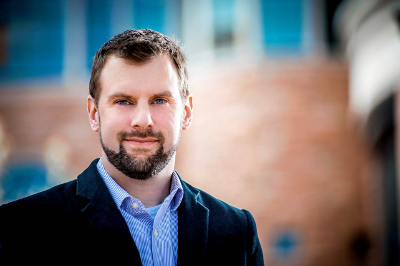|
|
|
The title of this talk is a statement made by Nobel Laureate Richard Feynman in reference to the challenge of predicting the behavior of turbulent fluid flows. Such flows are ubiquitous in nature and engineering, occurring everywhere from the kitchen sink to the interior of stars. Despite their prevalence and importance, however, Feynman’s statement remains as true today as in 1964 when he made it. Due to the unsolvable nature of turbulence, we continue to wrestle with the challenge of using computers to predict everything from the weather, to the optimal layout of turbines in a wind farm, to the processes by which fuel burns in an internal combustion engine. In this talk, I will discuss what turbulence is, where it occurs, what makes it so challenging to predict, and how this gap in predictive capability affects the design and analysis of engineering systems. I will also discuss whether there is any hope of overcoming these challenges in the future and why Sir Horace Lamb may have been right when he said: “When I die and go to heaven there are two matters on which I hope for enlightenment. One is quantum electrodynamics, and the other is the turbulent motion of fluids. And about the former I am rather optimistic.” |

 Dr. Peter Hamlington is an Assistant Professor and a Vogel Faculty Fellow in the Department of Mechanical Engineering at CU Boulder. Research in his group, the Turbulence and Energy System Laboratory (tesla.colorado.edu), is focused on understanding and modeling turbulent flows in both engineering and geophysical problems using large eddy and direct numerical simulations. He and his group have used numerical simulations for the study of a broad range of applications, including unsteady, boundary layer, chemically reacting, and oceanic flows, as well as boundary layer flows relevant to renewable energy systems. The primary emphasis in many of these studies has been to understand fundamental flow physics and to use the resulting insights for the development of physically accurate, computationally efficient models for large-scale simulations of real-world problems. Dr. Hamlington has a BA in Physics from the University of Chicago and MS and PhD degrees in Aerospace Science from the University of Michigan, Ann Arbor.
Dr. Peter Hamlington is an Assistant Professor and a Vogel Faculty Fellow in the Department of Mechanical Engineering at CU Boulder. Research in his group, the Turbulence and Energy System Laboratory (tesla.colorado.edu), is focused on understanding and modeling turbulent flows in both engineering and geophysical problems using large eddy and direct numerical simulations. He and his group have used numerical simulations for the study of a broad range of applications, including unsteady, boundary layer, chemically reacting, and oceanic flows, as well as boundary layer flows relevant to renewable energy systems. The primary emphasis in many of these studies has been to understand fundamental flow physics and to use the resulting insights for the development of physically accurate, computationally efficient models for large-scale simulations of real-world problems. Dr. Hamlington has a BA in Physics from the University of Chicago and MS and PhD degrees in Aerospace Science from the University of Michigan, Ann Arbor.